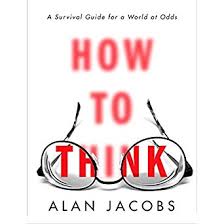The Witness of the Cognitively Impaired - A Review of "Living Gently in a Violent World"
All societies struggle with establishing a place for those who live with some form of physical or mental disability. Although we have not arrived, the modern developed world has made great strides in ensuring reasonable accommodations for those with physical disabilities. Despite some accounts of abuses of the ADA, in general, the move toward finding ways to more fully enable the participation of physically disabled persons in society is a good thing. We have struggled to a greater degree with finding a place for those with cognitive disabilities.
(Before moving on, I should note that I am using the word “disability” in a non-pejorative sense. Rather than attempting to establish some euphemism for a physical or cognitive difference from the majority of the population, I am simply indicating that there are individuals who, due to nature or accident, have different capabilities in one particular area that impact their ability to maneuver our society as easily as others. That there are such differences and that they make life more difficult for those who have them is not disputable. Often creative naming conventions appear to hinder rather than help the conversation.)
It is the cognitively disabled who are often least to be integrated into society, and those with both cognitive and physical disabilities who struggle the most. As a result of these disabilities many of these people are often sidelined, discarded, and viewed as problems to be solved rather than people to be loved.
In this, our modern, civilized, and inclusive culture is very little different than any other, despite our prideful belief in advancement. This was reinforced to me recently at a community event out of doors. People were lining the sidewalk to watch a parade of WWII era vehicles and reenactors. Much of the best space was covered several tiers deep, with people sitting on the curb, and a second or third row seated behind.
My family arrived after the initial rush and found one section of the curb unoccupied. The reason quickly became obvious because seated in their wheelchairs and camping chairs along the back of the sidewalk were the residents of a group home, likely the local ARC (which once stood for the Association of Retarded Citizens until “retarded” became an epithet rather than a euphemism). These adults made gross noises, talked at the wrong times, and were otherwise disruptive of polite norms. This meant that the curb in front of them was empty, until we sat down. For many, to be sure, the space was left out of consideration to not interfere with any care the group might need. For others, I wonder if the unwillingness to sit in front was not due to a certain level of disgust with these people and a sub-conscious discomfort at these “misfits.” This second hypothesis is reflective of the generally lower value society often places on those with disabilities, especially cognitive impairments.
In a recently revised book, Living Gently in a Violent World: The Prophetic Witness of Weakness, Stanley Hauerwas and Jean Vanier use the L’Arche communities, founded by Vanier, as an example of honoring the humanity of all persons, including those with cognitive disabilities. The book is worthy of reading, as it is a brief, but potent example of a better way to conceive of care for some of the least valued persons in our society.
Summary
The book is very short. It has only four chapters, book ended by an introduction and conclusion authored by John Swinton. The expanded edition also includes a study guide, with chapter by chapter questions for review.
Two of the chapters were authored by Vanier and two by Hauerwas. Vanier’s chapters deal with practical and personal accounts of life within L’Arche. These accounts, though theologically muddled, demonstrate Vanier’s real and significant concern for the citizens of our world least likely to be valued. The vision he provides of people with cognitive disabilities being treated as humans, with personalities and flaws like the rest of us, is compelling. Instead of hiding the mentally disabled from view and treating them like patients, L’Arche communities involve co-living with “normal” people who interact with them as neighbors rather than as clients. This process both recognizes the unique needs of these individuals and their distinct value as humans.
Hauerwas’s chapters are more theoretical in nature. As is usual for Hauerwas, they are eminently readable, often very pointed, and sometimes powerfully prophetic. The theological vision presented in this book is an application of his broader pacific ethic, an exposition, if you will, on the structure he outlines in books like The Peaceable Kingdom. The degree to which one finds the whole structure of Hauerwas’s ethics convincing will reflect the degree to which one accepts his theological reflections in this volume. He deals with some of the same obvious inconsistencies in this book as in all his works: e.g., writing about ecclesiology while remaining distant from the authority of a church, and, in this book, writing about gentleness with a somewhat aggressive polemic. This is vintage Hauerwas, both prophetic and conflicted in nature, but distinctly worthy of parsing.
The most significant point of this volume, which is a powerful one, is that among its many ethical concerns, the Christian church must remember the cognitively disabled. Caring for them is a reflection of the church’s gospel witness in the world. Because the cognitively disabled can often contribute very little to society in terms of economic productivity, they are often sidelined and hidden from sight. To some degree, this is necessary to shield them from becoming spectacles and ensuring they receive appropriate care. However, the treatment is often as bad as the condition, resulting in ostracization and isolation that denies the imago Dei in the mentally disabled––as if the primary, and perhaps sole, way that we image God is through rational capability (i.e., functional) rather than in our unmeasurable personhood (i.e., ontological). Hauerwas and Vanier draw attention to the insufficiency of this perspective and the need for deeper theological reflection and practical action for the good of Christian communities and the gospel witness of the universal church.
Conclusion
This book is a short, helpful reminder of a potential blind spot in the application of the gospel. Because we have removed the mentally disabled from view, we often forget about them. Organizations like L’Arche and Shepherds ministry are doing good work in seeking to emphasize the humanity of people with cognitive impairments. Not all of us are called to live in those communities, but all of us would do well to ponder how we have unconsciously adopted an instrumental, functional view of the value of humanity, which is reflected by our revulsion at, discomfort with, or simple desire to avoid the presence of those whose minds lack the agility with which we have been unreasonably blessed.
Note: I received a gratis copy of this volume from the publisher with no expectation of a positive review.





















There’s no reason to doubt that Jesus was nailed to the cross. Ultimately, I trust what Scripture says about Jesus’s crucifixion because I also trust what it says about his resurrection. And that’s what we should be celebrating this week.